If you remember, Honda has already released two facelifted versions of the Honda CR-V. One is for the American market, and the other was for the Japanese market. The U.S. version came out last year and it is more angular and it features a wider lower grille.
In comparison, the Japanese version debuted with a more subtle look, which is closer to the current design of the CR-V offered in the Philippine market. The Japan-spec facelifted model is given new tools like sequential turn signal lights and other interior changes.
Why are we talking about these two CR-V facelifts again? Well, the facelifted Honda crossover will appear at the Bangkok International Motor Show (BIMS) this week. This one, however, is something more similar to the U.S.-spec Honda CR-V, instead of the Japanese version facelift. Note also that this might be the model that the Philippine market is getting since almost all models launched in Thailand eventually find their way here.
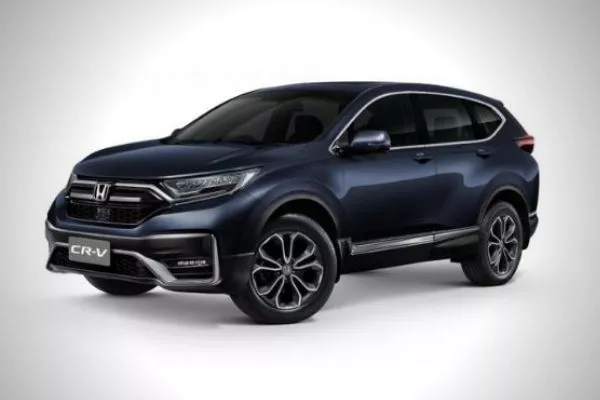
It's not a vast departure from the old design, but it's more angular than it was before
For starters, its exterior is very similar to the American-spec CR-V, which comes with a blacked-out grille and lower front bumper, as well as sequential indicators.
It also gets a set of new 18-inch alloy wheels, as well as smoked taillights, and the rear skid plate is replaced by a chrome strip. Exterior amenities include a pair of automatic leveling LED headlights, and LED fog lights.
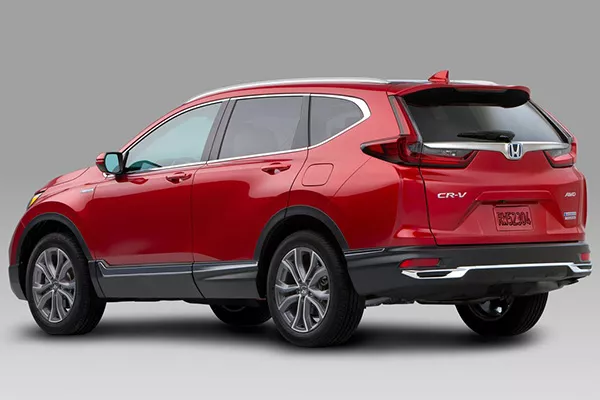
Yes, the skid-plate is indeed gone or no longer visible
When it comes to engines, most variants of the CR-V have a 2.4-liter i-VTEC inline-4 gasoline engine that makes 170 horsepower and 224 Nm of torque, which is then mated to a continuously variable transmission.
The top variant on the other hand has a 1.6-liter i-DTEC inline-4 diesel engine that can make 158 horsepower and 350 Nm of torque paired up with a nine-speed automatic transmission sending power to all wheels. And lastly, there’s the 1.5-liter VTEC turbo which the Thai market didn’t get, but it’s something that we’re wishing that’ll come here to the Philippines.
Currently, the only engine options we have for the Philippine-spec Honda CR-V is a 2.0-liter gasoline engine for the entry-level variant and a 1.6-liter diesel for the rest of the model lineup. And yes, the engines that are available with the facelifted CR-V are all new and are all definite improvements over the old engine options in terms of horsepower and torque.
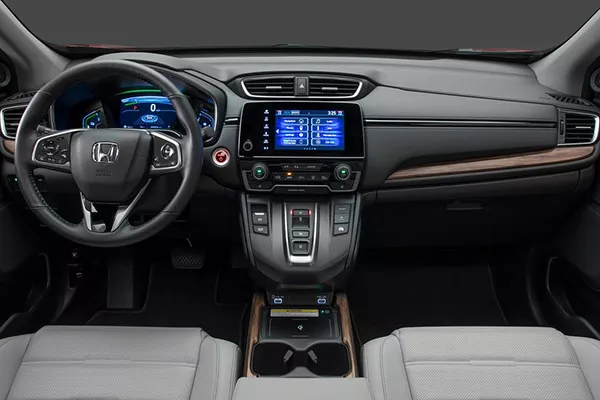
What can you say about the CR-V's interior?
With regards to its interior features and on-board tech, the facelifted CR-V can come with a seven-inch touchscreen with Android Auto and Apple CarPlay, power-adjustable front seats, keyless entry with walk-away automatic locking, dual-zone climate control, and the Honda Connect software.
For safety, the top-of-the-line CR-V has six airbags, stability control, and anti-lock braking with electronic brakeforce distribution (EBD). It also comes with the extensive Honda Sensing suite which consists of autonomous emergency braking, lane-keep assist, a LaneWatch blind-spot camera, and adaptive cruise control with "stop and go" function.
>>> Related:
- Honda Cars PH rolls out 6-digit discounts for select models this July
- A preview of the Honda CR-V 2020 Philippines via its USDM counterpart
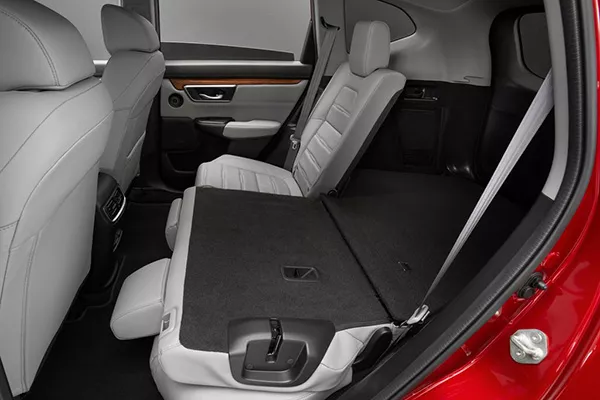
The seats of the facelifted CR-V will have the same versatility and flexibility
With regards to Honda Cars Philippines, there’s no word yet on when or how it will introduce the new CR-V in the country. It’s only a matter of time though, and we’re pretty sure that it will be a digital launch considering the current “climate” we are in.
Are you excited for the facelifted Honda CR-V? If you are, keep yourself posted here on Philkotse.com for more automotive news.
Know more about Honda CR-V 2026

The 2025 Honda CR-V is a midsize crossover SUV. For the Philippine market, it has three variants: the V Turbo CVT, VX Turbo CVT, and the RS e:HEV (hybrid) e-CVT.
The latest version of this Honda model has two different engine options. For the top-spec hybrid trim, it uses a 2.0-liter gasoline four-banger paired with a dual motor and lithium-ion battery. The combustion component alone produces up to 145 horsepower and 183 Nm of torque. The electric-powered component meanwhile, can churn out 181 horsepower and 335 Nm of torque.
Aboard the V and VX trims meanwhile is a 1.5-liter inline-4 engine that can churn out 187 horsepower and 240 Nm of torque.
Only the VX gets all-wheel-drive, while the rest are front-wheel-drive. All trims then use a continuously variable transmission (CVT), but the one on the hybrid trim is an electronic CVT (e-CVT).
In terms of dimensions, the all-new CR-V is 4,691mm long, 1,866mm wide, and 1,681mm (1,691mm for VX) in height. Both the hybrid and the V’s wheelbase then spans 2,701mm (2,700mm for VX).
Locally, the Honda CR-V competes against the likes of the Mazda CX-9, Cherry Tiggo 8 Pro, Kia Sorento, Hyundai Santa Fe, Peugeot 5008, etc.
>>> New and used Honda CR-V 2025 for sale in the Philippines
Honda CR-V Launch
The Honda CR-V was introduced to the Philippine market in September 2023. It launched with three different variants: the top-spec RS e:HEV CVT, the mid-spec VX CVT AWD, and the entry-level V CVT FWD. At launch, their prices ranged from Php 2.100 million to Php 2.590 million.
Honda CR-V Exterior
The 2025 CR-V carries the sleekness and the sportiness of the modern Honda design. Present on its front end are a pair of sharp LED headlamps which are outlined by LED daytime running lamps, a black-colored hexagonal mesh grille, and an angular front lower bumper.

The sides then feature power-folding side mirrors, a straight window line, and black plastic claddings for the VX and V. Its rear likewise gets a power tailgate, and a distinctively shaped pair of LED taillights.

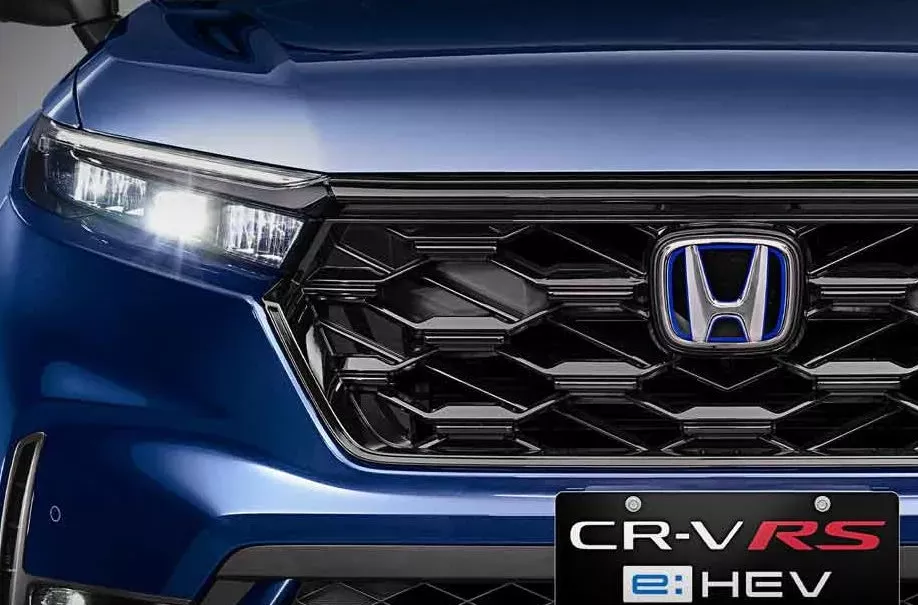
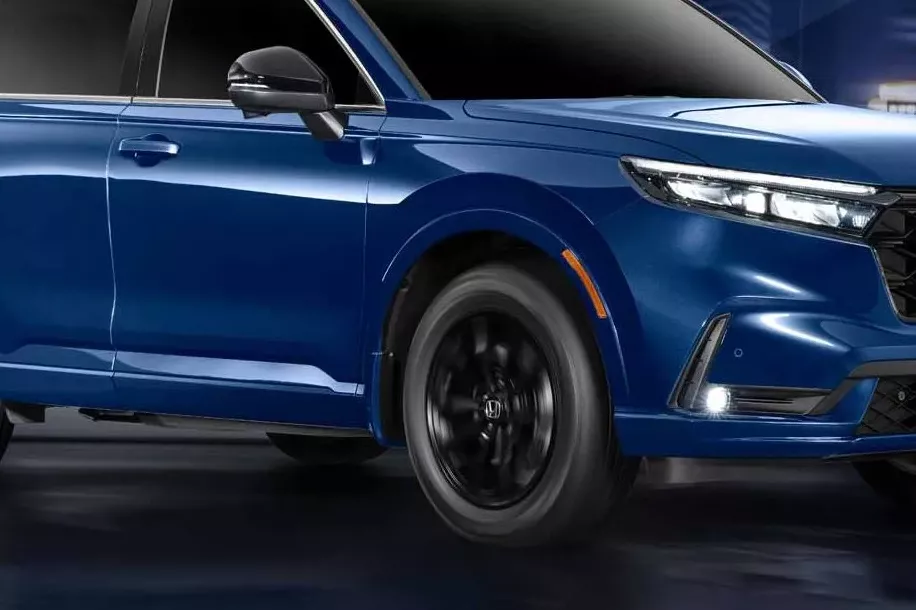
The RS hybrid trim stands out among the three as it gets plenty of additions mainly focused on style. This includes a black color for its side mirrors and antenna, body-color mudguards, and a set of 18-inch piano black alloy wheels.
Honda CR-V Interior
Inside, the top-spec RS e:HEV can seat up to five, whereas the V and VX can accommodate up to seven.
Present on all trims is a 10.2-inch digital gauge cluster, leather seats (w/ red stitching for the RS), a push-to-start button, USB A and C charging ports, an eight-way power adjustable driver’s seat (w/ power lumbar support for RS), auto-dimming rearview mirror, etc.


Only the RS and VX get rain-sensing wipers but exclusive only to the highest-spec trim are a sunroof, paddle shifters, and a drive mode selector with normal, eco, and sport. The rest do get an eco-drive mode.
For air-conditioning, the RS e:HEV gets a dual-zone automatic climate control system while the V and VX get a triple-zone automatic climate control system. All have physical buttons, as well.
Technology & Safety Features
Present on all CR-V trims is a 9-inch touchscreen with wireless Apple CarPlay and Android Auto. It also gets Bluetooth, USB connectivity, and audio streaming. Likewise available to all CR-V variants is a wireless charging pad.
Sound is fed to the CR-V’s cabin by a 12-piece Bose sound speaker (RS) or an eight-piece sound system (VX and V).
Present on all trims of the 2025 CR-V is the Honda Sensing driver-assistive suite. This includes features like adaptive cruise control with low-speed follow, collision mitigation braking, forward collision warning, lane keep assist, road departure mitigation, lane departure warning, automatic high beams, adaptive driving beams, lead car departure notification, and a driver attention monitor.
Those advanced safety features are then supported by seven airbags, anti-lock braking, stability control, hill-start assist, hill-descent control, a 360-degree view camera, tire pressure monitoring, ISOFIX child seat anchors, parking sensors (eight for RS, four for VX and V), a security alarm, an engine immobilizer, etc.
Platform & Chassis
The CR-V uses a MacPherson strut for the front and a multi-link suspension system for the rear. Braking is done via disc brakes for all four wheels and an electronic parking brake.
Engine & Drivetrain
There are two engine options for the 2025 CR-V. For the RS e:HEV, it gets a 2.0-liter gasoline engine paired with a dual-motor, lithium-ion battery setup. The gasoline mill alone produces up to 145 horsepower and 183 Nm of torque. The electric component then adds 181 horsepower and 335 Nm of torque to its output. Power is then sent to its front wheels via an e-CVT.
The VX and V, both utilize a 1.5-liter turbocharged gasoline engine that’s good for 187 horsepower and 240 Nm of torque. Both use CVT, but the V is front-wheel-drive, while the VX is all-wheel-drive.
There are five available color options for the 2025 CR-V. This includes Ignite Red Metallic, Meteoroid Gray Metallic, Lunar Silver Metallic, Platinium White Pearl, and Canyon River Blue Metallic.
The Honda CR-V is more than a competent challenger to other similarly sized crossovers when it comes to making power, and on-board features. It is also on top of the totem pole when it comes to providing a comprehensive safety kit. All the more to its credit is the fact that the latter comes as standard to all three of its trims.
Honda CR-V 2025 Price List
| Variants | Price |
|---|---|
| Honda CR-V V Turbo CVT | ₱2,100,000 |
| Honda CR-V V Turbo CVT (Platinum White Pearl) | ₱2,120,000 |
| Honda CR-V VX Turbo CVT | ₱2,290,000 |
| Honda CR-V VX Turbo CVT (Platinum White Pearl) | ₱2,310,000 |
| Honda CR-V RS e:HEV E-CVT | ₱2,605,000 |
| Honda CR-V RS e:HEV E-CVT (Platinum White Pearl) | ₱2,625,000 |
Honda CR-V Pros & Cons
Pros
- Stylish looks
- Comprehensive safety kit
- Generous output figures
- Plenty of onboard features
Cons
- Reduced cargo space on certain trims
Honda CR-V FAQs
1. What kind of car is the Honda CR-V 2025?
Sized and designed like a Volkswagen Tiguan, the 2025 Honda CR-V is a five-seat small crossover.
2. How many color options are there for the Honda CR-V to choose from?
The Honda CR-V is available in 4 colors including Ignite Red Metallic, Modern Steel Metallic, Platinum Pearl White, Cosmic Blue Metallic.
3. Is there a diesel Honda CR-V in the Philippines?
Honda Philippines offers the Honda CR-V in two variants – the five-seater gasoline and the seven-seater diesel.
4. Is the Honda CR-V 2025 Philippines a good car?
Yes, the CR-V is one of the country's most popular cars in the compact crossover segment. The Philippines saw the beginning of the Honda CR-V in the late 1990s and after two decades, it still remained one of the most prominent nameplates in its class.
5. How much is the Honda CR-V 2025 Philippines?
Honda CR-V 2025 price Philippines ranges from Php 2,100,000 to Php 2,610,000.
₱ 2,100,000 - ₱ 2,590,000
ExploreRecent posts
- Honda CR-V variant comparison guide Sep 22, 2023
- Honda shows two CR-V facelifts Oct 26, 2020
- Honda SUV Philippines: List of all models, price & brief review Apr 15, 2021
- Honda CR-V vs Toyota Rav4: Two handsome old-timers battle it out! Jul 15, 2021
















